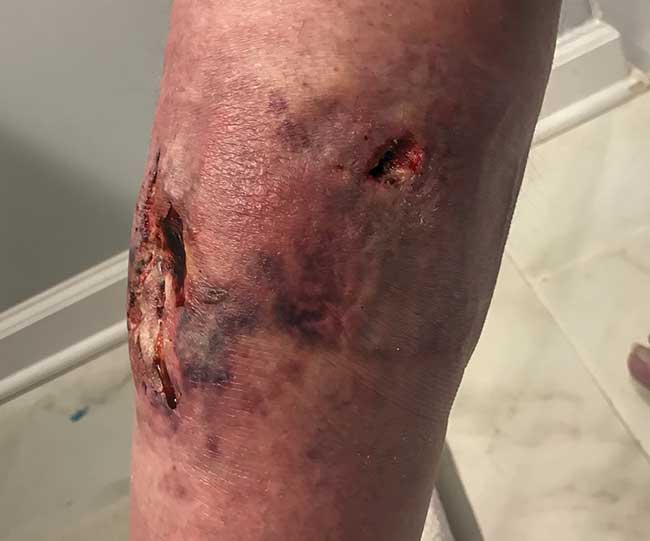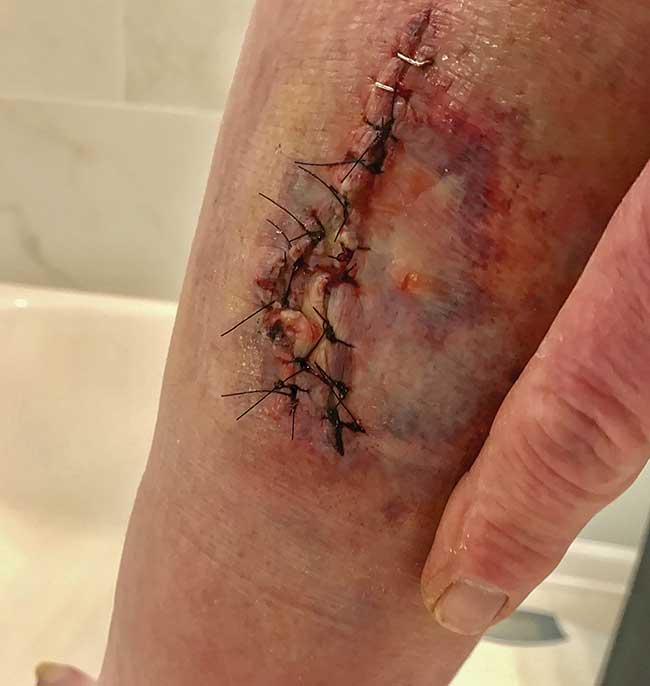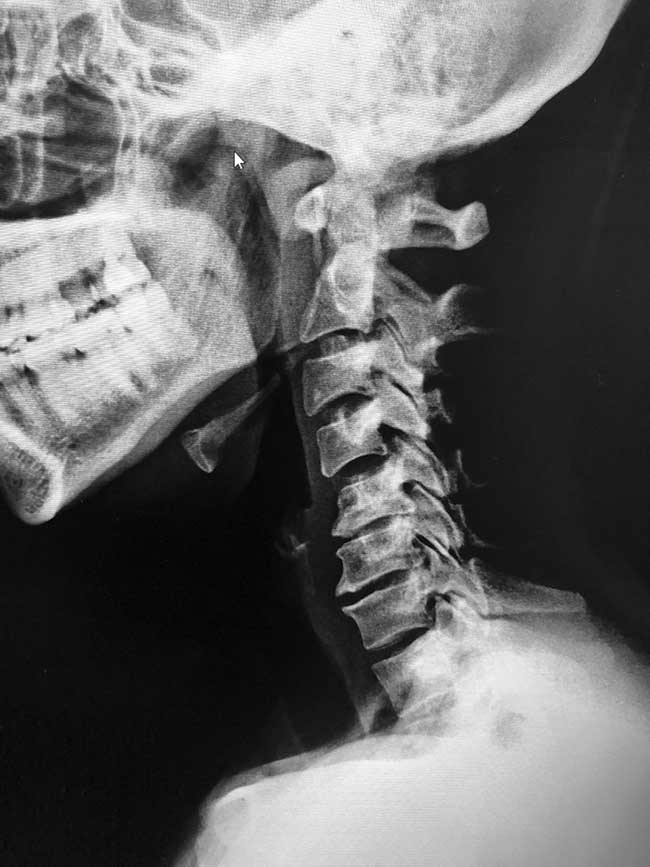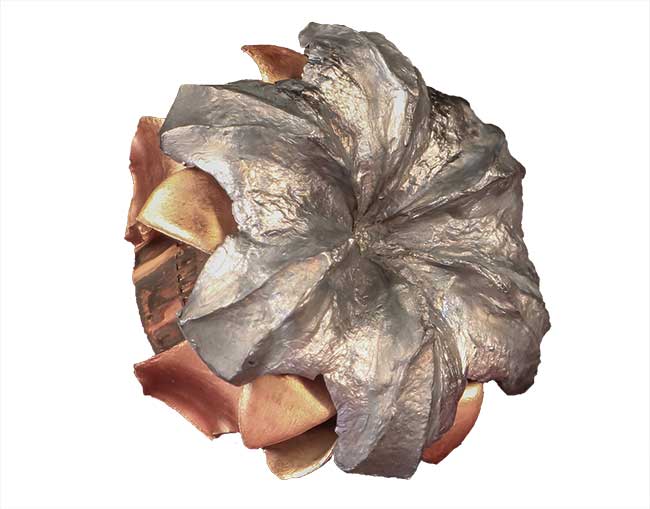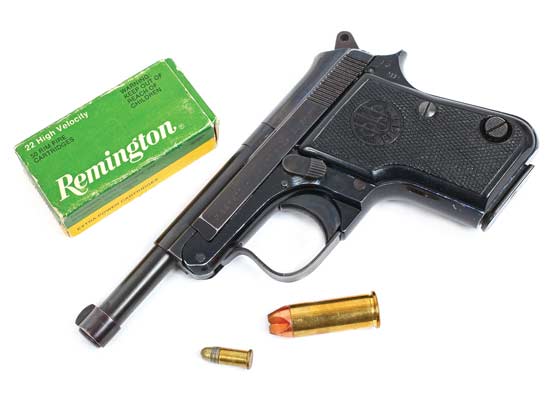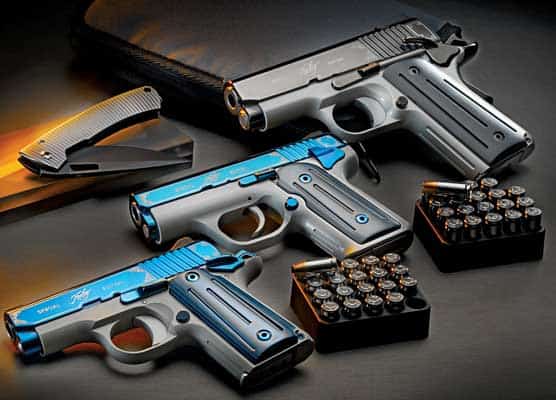What Really Happens When Somebody Get Shot?
A clinical examination of gunshot effects
“It Sucks … A Lot.” — A Guy I Know Who Has Been Shot
In the interest of transparency, I have myself only been “kind of” shot. This is a bit like being “sort of” pregnant, but it remains nonetheless true. I had an M16 round bounce off the top of my head one time. It left me with an oozing crease that healed in short order and a proper headache.
Before you write in gleeful letters regarding the relative hardness of my cranium, don’t bother. My gun buddies long ago beat you to it. My long-suffering bride wholeheartedly agrees. Truth be known, God just wasn’t quite ready for me to come home just yet.
I have, however, seen lots of other people legitimately shot. In sum, it’s not much like the movies. If we care enough about gunmanship to buy a gun and train, then it behooves us to invest a bit of thought into what happens on the other end as well.
Fantastic Voyage
The round was a SIG SAUER 9mm 124-grain V-Crown hollowpoint fired out of some kind of GLOCK. The bullet passed through the seat of a pickup truck before transiting the calf of a dear friend in law enforcement. It eventually embedded itself in the door frame.
My buddy told me at first, he was just angry. It initially felt like he had been hit in the leg with a bat — dull, hard and powerful. However, he said about 15 seconds later the pain kicked in and he was done. He lost all interest in moving, shooting and communicating. For the 15 seconds he said he remained quite prickly. After that, he was ready to go home.
The bullet did exactly, precisely what it was supposed to do. It transited intervening barrier material unchanged and then expanded like a politician’s ego upon contact with my buddy’s soft, pink flesh. I have no idea how the SIG guys get their bullets to do that.
My pals in the ER irrigated the wound, determined the plumbing, nerves and structural bits were intact, and closed everything up. A few days later his leg started to look like roadkill. A local surgeon reopened everything in the OR and cleaned out two 9mm disks of Naugahyde and a little cylinder of bloody foam rubber.
As the gaping bullet had punched through the truck seat, it had picked up a circular piece of seat cover going in and another going out as well as the little intervening cylinder of foam cushion material as cargo. Once inside my buddy’s leg the bullet tumbled and deposited its toxic payload before becoming one with the truck door. With debridement, the right antibiotics and a little time everything turned out fine, but the seat cushion stuff had to come out.
Physics Break
A bullet is just a little mobile energy-storing battery. Bullet weight and velocity conspire to define kinetic energy in keeping with the formula ½ mass times velocity squared. Once you have this little power cell tooled up, you have to efficiently extract the energy in the form of tissue destruction downrange. This is where our buddies at SIG really outdid themselves in the previous example.
There is more technology crammed into your typical modern barrier-blind expanding handgun bullet than men sent to the moon. Precision machined solid copper bullets can deploy jagged fangs and morph into something that looks like it belongs in a horror movie. Solid copper HoneyBadger rounds from Black Hills are like little flying power tools. Expanding bullets from Winchester, SIG SAUER, Hornady and Federal zip through stuff like clothes, auto bodies and glass to veritably explode when they encounter something warm and gooey. In each case unleashing maximum chaos is the point of the exercise.
Now A Bit Of Anatomy
The human machine is a mighty heterogenous contrivance. Bones are dense, muscles are elastic, lungs are mostly air and blood courses through absolutely everything. Taking life is a truly unfortunate byproduct of the defensive shooting process. The point is to get bad people to stop doing bad things in a timely fashion.
The human brain weighs about 3 lbs. and is mostly fat. It contains some 100 billion neurons and more than 100,000 miles of blood vessels. Fresh brain is really insubstantial — about like thick Jell-O. As a result, God designed the human skull to be remarkably resilient in the face of trauma. It’s why that M16 round left my sparkly personality intact.
The spinal cord runs from the base of your brain to your butt, is about the diameter of your little finger, and is encased in bone. Its mission is to transfer vast quantities of information from the brain to everything else and back again. Disrupt the brain or the spinal cord and the fight is over.
Elsewhere transiting bullets tear and cut muscles, blood vessels and organs. They tend to shatter bones. Precipitous blood loss and the subsequent drop in blood pressure are what typically stop most gunfights.
We gun writers used to have to describe the process in prose. Now you can just pull up YouTube and see more real-world shootings than you can stand. About 60% of the time folks hit by a gunshot most anyplace will stop fighting. For my buddy shot through the leg it took about 15 seconds. It’s the remaining 40% you have to worry about.
All this stuff is theoretically interesting, but trying to hit an armored target the diameter of your little finger in dim light while somebody is actively trying to kill you is an undeniably tall order. It’s why we typically use the best gun and ammunition combination we can afford and train to shoot center of mass. In the real world, we also plan to engage the threat until the threat is no longer threatening.
Practical Tactical
Our hero walked into the ER with a towel pressed against his groin. I offered to at least let him sit down and he declined. He seemed lucid, calm and comfortable. He had been involved in a dispute over some fair lass and his opposite number had expressed his displeasure via 9mm High Point. The bullet had struck him in the left lower abdomen. There was no exit wound.
Thugs in my experience most typically shoot the cheapest ammo they can steal. In this case, it meant a 115-grain 9mm FMJ round. X-ray studies showed the bullet mashed into the guy’s pelvis. The projectile had thoroughly perforated his bowel, but there did not seem to be any undue bleeding.
The surgical residents meandered about his entrails long enough to sew up the sundry holes and affix a bag into which he might poop. He would get his ostomy reversed at some point down the road and be back in the hood, ready to rumble. I first met the guy maybe 20 minutes after he had been shot in the groin with a 9mm parabellum round, and he felt fine.
At the time of our meeting in the ER, that guy could have bench pressed a log truck. He would certainly have died eventually in the absence of medical care, but he could have fomented a great deal of mischief for literally hours after the shooting. The lesson for the law-abiding armed American — use the good stuff and don’t quit until your attacker knows he’s done.
Location, Location, Location …
The lady was in her 50s and ran a small country store. Some thug walked in with a stupid little .25 ACP pistol and cleaned out the register. She gave him what he wanted, but as he left, he tossed a tiny quarter-inch bullet her way just for meanness.
The round entered her right neck and transected her spinal cord, leaving her paralyzed from the shoulders down. Size matters some and velocity is important, but location is everything. I don’t know if they ever caught the guy. Given the opportunity, I can think of some creative ways to deal with him, though. I would need a pair of pliers, some wasp spray, a soldering iron, about 20 feet of tow chain and maybe half an hour uninterrupted for just the two of us.
Denouement
No sensible person ever wants to use a gun for real. It is messy, terrifying, emotionally scarring and fraught with pitfalls both legal, moral and otherwise. However, if I ever find myself in a do or die situation, I’d really rather be the guy doing rather than the guy dying.
Gunshot wounds are indeed not much like the movies. Gunfire does not cause cars to explode, nor does it throw an evildoer backwards 20 feet through a wall. However, a concealed firearm nonetheless remains the free citizen’s most reliable insulation against life’s resplendent ills. Such stuff as caliber, capacity and even color might seem important, but what happens on the other end is what’s critical.
For more info: SIGSAUER.com

Get More Personal Defense Tips!
Sign up for the Personal Defense newsletter here:




